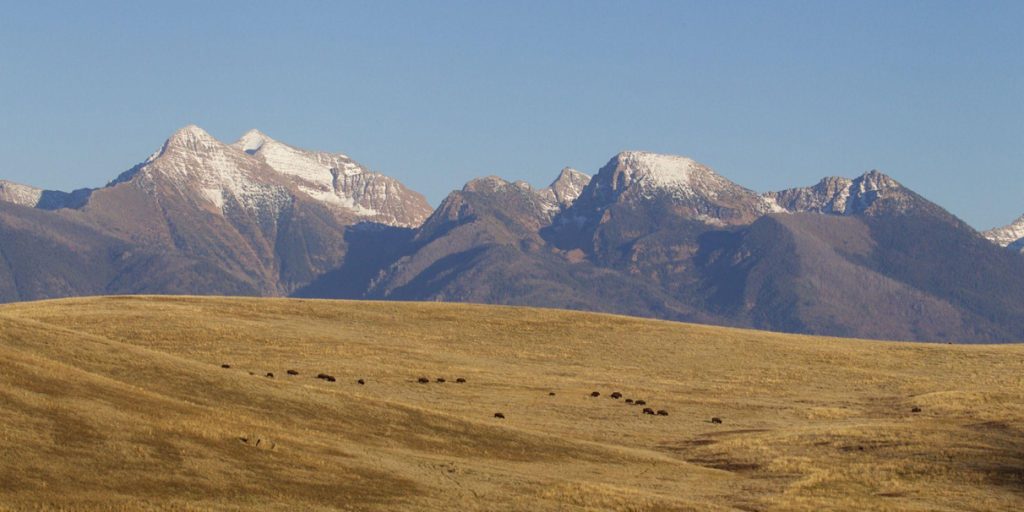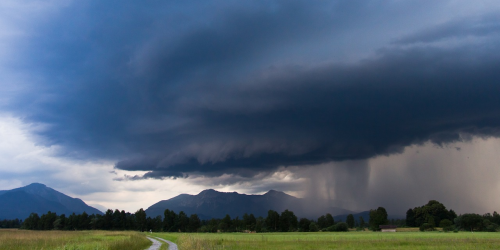CPO’s National Integrated Drought Information System (NIDIS) Program is announcing five new 2-year projects in Fiscal Year 2022 (FY22), focused on working with tribal nations to build tribal drought resilience. The competitively selected projects total $2,422,0131 in cooperative agreements.


NIDIS recognizes that tribal communities face unique drought challenges and opportunities, requiring customized approaches, tools, and data that may integrate traditional tribal knowledge and cultural, medicinal, and spiritual values. Indigenous experiences and perspectives of drought vary greatly across the United States. To effectively address tribal needs as mandated by the NIDIS Public Law, NIDIS and partners jointly developed the NIDIS Tribal Drought Engagement Strategy: 2021-2025 in consultation with tribal partners.
One of the needs that became apparent through this process was the implementation of actions called for in those plans. Therefore, the Coping with Drought: Building Tribal Drought Resilience competition focused on the implementation of actions – together with research on those actions – to build tribal drought resilience contained in existing plans and strategies. The portfolio of projects selected includes five projects that are either fully led by, or co-led by tribal nations with lands within the states of California, Oregon, Montana, New Mexico, and Idaho.
These five new FY22 projects2 funded by NIDIS are:
- Chími Nukárihihi (Let’s Get Ready): Collaborative Climate Change and Drought Response Monitoring and Implementation
Through this project, the Karuk Tribe aims to improve Karuk socio-ecological resilience to drought by (a) increasing access to drought-relevant data for Karuk Tribal managers and (b) increasing Karuk community engagement in research, monitoring, and management activities to better integrate Indigenous and Western science and management systems and achieve more rapid awareness of and response to drought impacts across the landscape. The project team will build a drought resilience data portal to enable Karuk natural resources managers to access geospatial data in a user-friendly way. The team will also build on the previous five years of Agroecosystem Climate Assessment plot data collection, which has resulted in baseline data of focal food, fibers, and medicines that are important for Karuk culture.- PIs: Analisa Tripp and Colleen Rossier, Karuk Tribe Department of Natural Resources
- Co-PIs: Jennifer Sowerwine, University of California-Berkeley
- Native Drought Resilience: Confederated Salish and Kootenai Tribes (CSKT) Actions for Climate-Drought Adaptation
The Confederated Salish & Kootenai Tribes (CSKT) of the Flathead Reservation were among the first Native American tribes to draft a Climate Change Strategic Plan when they did so in 2013 (updated in 2016). In 2020 the CSKT Climate Change Advisory Committee initiated a community-informed process to update the CSKT Climate Change Plan to reflect current projections of climate impacts on the Flathead Reservation and stimulate adaptation planning and actions by CSKT Departments. This “living” plan outlines climate impacts to all sectors of tribal governance and resilience actions that the tribes are (or will be) undertaking to mitigate climate impacts. The Native Drought Resilience project — a partnership between the CSKT, Salish Kootenai College, the Montana Climate Office at the University of Montana, and the Wilderness Society — will implement several actions contained in the 2021 CSKT Climate Resiliency Plan.- PI: R. Kyle Bocinsky, University of Montana
- Co-PIs: Michael Durglo, Confederated Salish and Kootenai Tribes Tribal Historic Preservation Department, Joshua Rosenau, Salish Kootenai College, Zach Hoylman and Maureen McCarthy, University of Montana, and Anne Carlson, The Wilderness Society
- Developing a Drought Early Warning System and Indices for the Confederated Tribes of the Umatilla Indian Reservation
From time immemorial, the people of the Confederated Tribes of the Umatilla Indian Reservation (CTUIR) have been intricately linked to the First Foods (water, salmon, big game, roots, and berries). The First Foods gave themselves to the people, and in reciprocity, the people take care of the First Foods. To build Tribal drought resilience, the CTUIR will develop a culturally relevant drought early warning system (DEWS) to ensure the long-term security of the First Foods, economic activities, and groundwater supplies to meet domestic, commercial, municipal and irrigation uses on the Umatilla Indian Reservation. With this project, the CTUIR plans to address drought variability, forecast its onset/recovery, conduct research, plan for mitigation, and share this information with the Umatilla Indian Reservation community, other tribes, state and federal agencies, and the broader environmental and scientific communities. To accomplish these objectives, the CTUIR proposes to develop a DEWS dashboard and local indices for streamflow, baseflow and groundwater levels, a conservation plan, and expanded monitoring of springs in the upper Umatilla River Basin and groundwater in the southern portion of the Umatilla Indian Reservation (drilling two wells, shallow and deep).- PI: Kate Ely, Confederated Tribes of the Umatilla Indian Reservation Water Resources Program
- Enhancing Water Retention and Facilitating Groundwater Recharge to Protect and Maintain Springs
Located in the arid Southwest, water is a revered resource for the Pueblo de San Ildefonso and is central to many cultural practices and essential needs. Drought and other changes in hydrological cycles affects infiltration rates and recharge to groundwater aquifers, which adversely affects surface water bodies sustained by groundwater, including springs. This project aims to protect springs located on the Pueblo de San Ildefonso from drought to help sustain wildlife and native vegetation, while also ensuring the Pueblo community can visit and use the springs, particularly sacred sites, for traditional and cultural practices. The project will restore areas directly surrounding springs on Pueblo lands, collaborate with surrounding landowners to identify groundwater recharge areas at higher elevations that replenish springs and assess the need to enhance or protect these recharge areas. Monitoring and adaptive management will be an integral part of this project, including monitoring to evaluate the success of spring restoration and protection that can inform future drought restoration projects.- PIs: Raymond Martinez, Department of Environmental and Cultural Preservation Pueblo De San Ildefonso
- Wetlands to Combat Drought: Strengthening Drought Preparedness on the Coeur d’Alene Reservation through Wetland Restoration and Monitoring
Wetlands mitigate the impacts of drought by absorbing and retaining excess water during wet periods and returning it to the water table during dry periods. Even though 65% of the wetlands once found within the Coeur d’Alene Indian Reservation have been lost, the cultural, ecological, and spiritual importance of wetland functions remain sacred to the Coeur d’Alene people. In order to build Tribal capacity around drought resilience, the project team will integrate Tribal knowledge and wetland science through six restoration projects. The resulting restored wetlands will increase the capacity of wetlands to mitigate drought; provide habitat for culturally important plants, fish, and wildlife; and enhance cultural services. The “Wetlands to Combat Drought Monitoring Program” to evaluate how wetlands help lessen the effects of drought over time will also be implemented through this project.- PI: Mažeika Patricio Sullivan, Clemson University
- Co-PIs: Caj Matheson and Angelo Vitale, Coeur d’Alene Tribe Department of Natural Resources
The National Integrated Drought Information System (NIDIS), authorized in 2006, is a multi-agency partnership that coordinates drought monitoring, forecasting, planning, and information at national, state, and local levels across the country. NIDIS aims to help the nation move to an increasingly proactive approach to understand and manage drought risks and impacts, and to improve long-term drought resilience.
1The funding will be distributed over the life of the projects and future-year funding is conditional on appropriations.
2 At the time of publication, all awards may not have been accepted by recipient institutions





